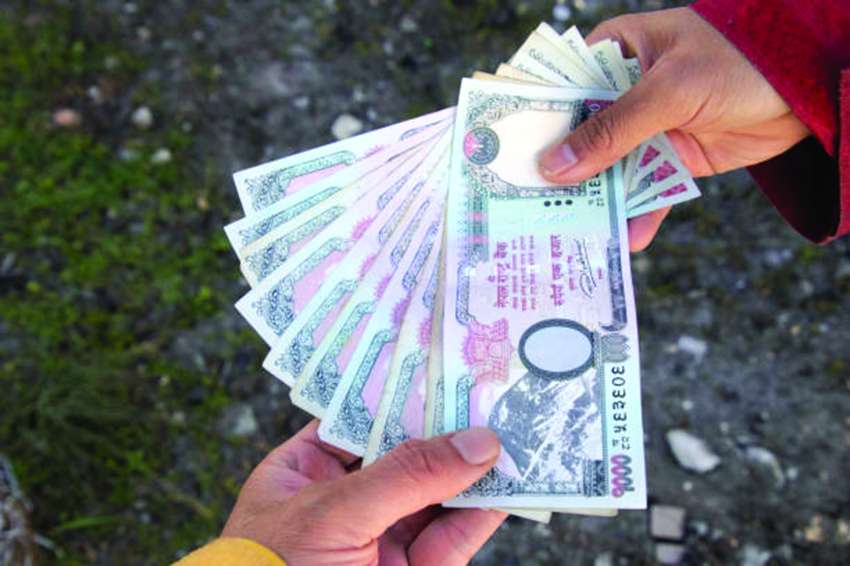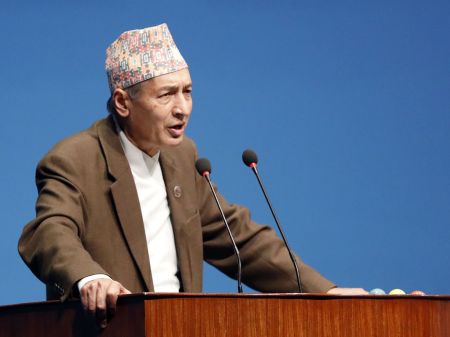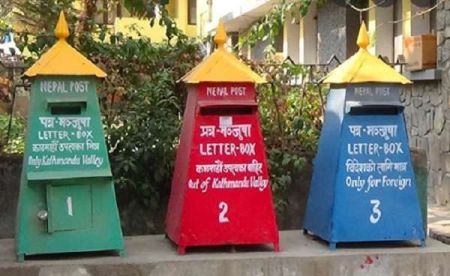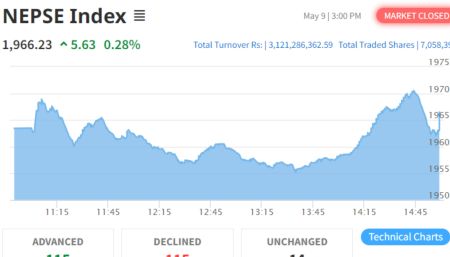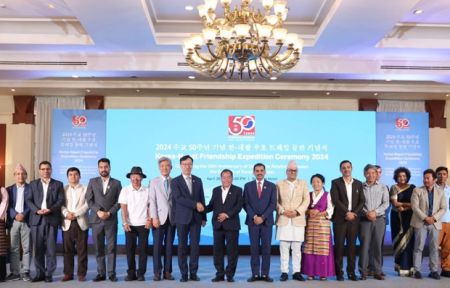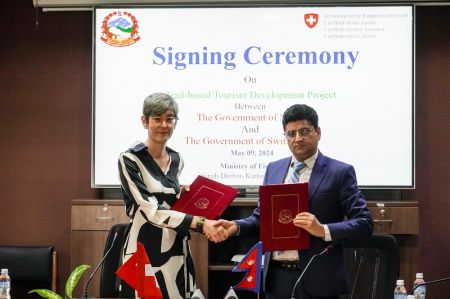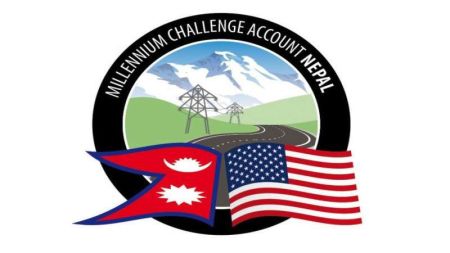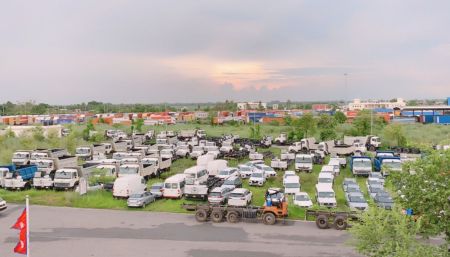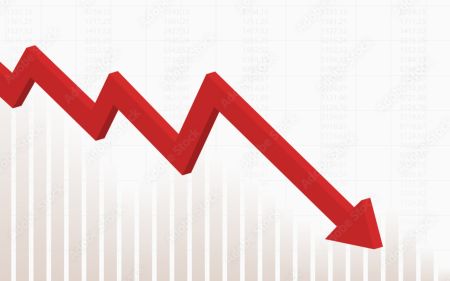Nepal is confronted with two major challenges at the moment. First, protecting the economy from external vulnerabilities while graduating from LDC in 2026; and second, achieving the targets set for the Sustainable Development Goals (SDGs) in 2030. The big question is whether the present pace of growth and development supports coping with the enormous challenges that lie ahead. The simple answer is no.
Consumer price inflation is on the rise. The average price inflation hit 7.74% in the fiscal year 2022/23 against 6.32% of the previous fiscal year. This constitutes food and beverage price inflation of 7.38% and the non-food and service inflation of 7.48%. Merchandise export fell by 21% while import also declined by 16% incurring a total trade deficit of Rs 1,455 billion. Service trade also remained negative by Rs 83.85 billion whereas travel and payment for education abroad constituted the major import of services.
Likewise, the fiscal deficit increased to Rs 486.89 billion in 2022/23, almost double of the previous year. Revenue collection decreased by 10% while the government spending increased by 9.5% to Rs 1,430 billion. Of this, capital expenditure remained merely 16% of the total expenditure, while public debt reached 41% of GDP.
Weak Industrial Sector
Nepal, being a landlocked country, faces challenges due to its limited industrial base. In contrast, neighbouring countries like China and India have well-established industrial sectors, and Bangladesh is making significant strides in industrial production. Industry contributes only 14% of the GDP in Nepali economy, with agriculture and services accounting for 24% and 62%, respectively. Manufacturing, specifically, contributes just about 5% to the GDP. Comparatively, in Bangladesh, India, and China, the manufacturing sector makes up approximately 18%, 17%, and 28% of their GDPs, respectively.
Given its narrow production base and limited industrialisation, Nepal heavily relies on imports for manufactured articles and consumer products, primarily from neighbouring countries. The country's export portfolio is limited and primarily consists of primary and agricultural products with low value-added components.
Investment in the industrial sector, especially in manufacturing, is dwindling due to factors such as low domestic savings, an unfavourable investment climate, and a lack of significant foreign direct investment (FDI). According to the World Investment Report-2023, Nepal ranks poorly in terms of FDI among comparable South Asian economies, receiving only $65 million in 2022, with a total FDI stock of $2.0 billion. This amount is only slightly higher than war-torn Afghanistan and Bhutan - the smallest economy in the region with a GDP of $2.68 billion.
The demographic profile from the last census reveals that nearly 43% of the total population falls within the 15-39 age group, and two-thirds (15-64 age group) are considered economically active. However, a substantial number of young individuals are leaving the country each year, either for temporary employment or to study abroad. In 2022, the exodus was particularly significant, with 774,976 people receiving approval from the Department of Foreign Employment to work abroad, and over 100,000 students going abroad for higher studies. This is straining the country's ability to meet the labour needs of its domestic production units, thereby affecting domestic production and leading to increased imports of goods and services.
Rising Trade Deficit
With the opening of the economy and gradual removal of trade barriers, Nepal is confronted with the challenges of putting a break on the steady rise of the trade deficit. Trade liberalisation has had a dual impact on the national economy. On one hand, cheaper goods, particularly those imported from neighbouring countries, are replacing domestic products, leading to the closure of industries and production units. On the other hand, export products face fierce competition in destination markets, resulting in a rapid erosion of market share. Examples of such export products include carpets, ready-made garments, and pashmina. A significant portion of Nepal's exports, including palm oil, sunflower and soybean oil, and vegetable ghee, is directed toward India. These products benefit from duty advantages established under bilateral trade treaties. However, historical instances suggest that Nepal's exports can be vulnerable when the importing country rationalises its duty structure.
The increasing number of labour migrants and their impact on domestic production have trapped the country in a vicious cycle of migration, remittances, rising imports, reduced domestic production, and further migration. The economy cannot sustain for a longer term without breaking this cycle.
Nepal shares its borders with three neighbouring countries: India, China, and Bangladesh, collectively home to around two billion people. This represents a substantial market potential for Nepali products and services. However, Nepal's export performance with these countries has not significantly improved over the past decade. Instead, the trade deficit with these neighbours is growing at an alarming rate. Nepal's export to Bangladesh was much higher in comparison to its import till 2013/14. But Nepal is losing ground in export now. This deficit can be attributed to issues related to declining supply capacity and uncertain market access conditions.
There is a looming fear of losing further market access, especially as Nepal is on the path to graduating from the category of Least Developed Countries (LDC) in just two and a half years. It appears that the government has not yet devised concrete plans to address the challenges that will arise from this graduation. The road ahead is treacherous and bumpy.
The Way Ahead
To ensure the stability of Nepal's macroeconomic fundamentals, a comprehensive adjustment and reorientation of monetary and fiscal policies, investment and trade policy is a must. Additionally, strategic reforms in governance and the labour market are essential. Sector-specific policies, such as those related to agriculture, transport, tourism, education, health, and IT, should be aligned with the goal of promoting exports and job creation.
In the agricultural sector, there is a need to focus on commercialisation and the promotion of high-value products and value-added services. For instance, the medicinal herbs found in the high mountains and hills could be processed to extract essential oils and other ingredients for high-value consumer goods. This can boost export earnings and generate employment and self-employment opportunities.
The inadequate investment in the manufacturing sector is hampering industrial growth. Bridging the gap between pledged FDI and its realisation is crucial. A recent survey conducted by the National Reserve Bank (NRB) reveals that only 36.5% of approved FDI is actually realised. To address this, a review of existing policies, rules, and regulations, along with governance reforms, streamlined investment procedures, and improved information exchange, is essential to attract both domestic and foreign investors.
Enhancing transport, energy, and IT connectivity with neighbouring countries is critical to boosting Nepal's export trade and realising its potential as a land bridge between two big economies. Till the end of 19th century, Nepal was serving as a crucial point for entrepot trade between India and Tibet. The treaties related to transit services with both neighbours provide an opportunity to revive this arrangement.
The irony of Nepali industries is that there is a lack of jobs in the market to engage the youth in productive activities, while skilled and even non-skilled workers are in short supply for existing industries. Addressing this paradox requires the implementation of effective skill development and employment policies. Incentive structures should be designed and implemented to retain the workforce within the country rather than sending unskilled and semi-skilled workers abroad.
And finally, The political leaders must recognise that populist handouts may yield short-term electoral gains but do not offer lasting solutions to the growing economic challenges. To stem the brain drain and the loss of skilled labour, we must engage in strategic planning and demonstrate a high-level commitment to enhancing the employability of the workforce and creating employment opportunities at home.
(Ojha served as the commerce secretary for the Government of Nepal)


